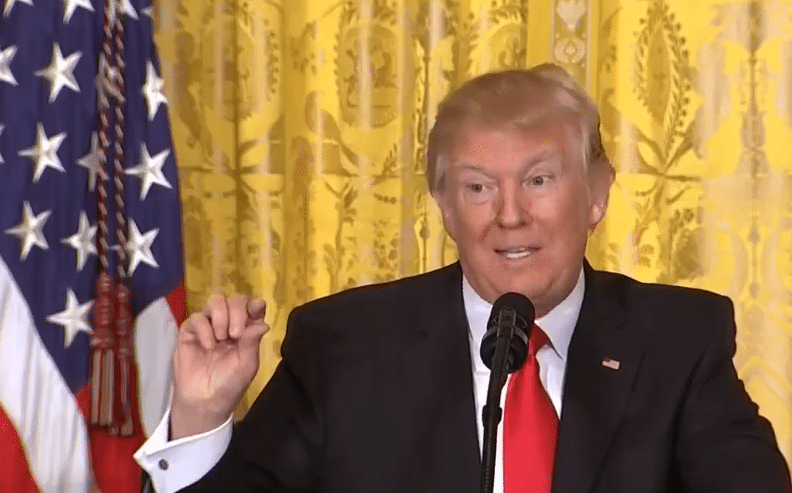
According to data gathered by the Associated Press and other media, Donald Trump was reelected president with 277 electoral votes and almost every incumbent lawmaker with a big defense-nuclear constituency won reelection.
While Trump and these lawmakers will return to Washington come January, U.S. voters also helped Republicans take back the majority in the Senate with at least 52 seats. At the deadline for Nuclear Security & Deterrence Monitor, the House was still up for grabs, but the GOP led the race with 210 seats.
In the Senate, Sen. Jacky Rosen (D-Nev.), an incumbent and member of the Senate Armed Services Committee, narrowly led her opponent, Sam Brown (R) by 1.3% at 96% of the votes in, but the race was undecided at the deadline for the Monitor. Nevada includes Nevada National Security Site.
The Lawrence Livermore National Laboratory got a new U.S. Senator in Rep. Adam Schiff (D-Calif.), who won the seat formerly held by Sen. Dianne Feinstein (D-Calif.) who died in 2023 and was replaced by gubernatorial appointee Sen. Laphonza Butler (D-Calif.)
In the House, districts with defense-nuclear constituencies where incumbents easily prevailed include:
- Missouri District 5, which neighbors the Kansas City National Security Complex: Rep. Emanuel Cleaver II (D).
- New Mexico District 3, which neighbors Los Alamos National Laboratory: Rep. Teresa Leger Fernandez (D).
- Tennessee District 3, which neighbors the Oak Ridge Site, the Oak Ridge National Laboratory and the Y-12 National Security Complex: Rep. Charles Fleischmann (R).
- Texas District 13, which abuts the Pantex Plant: Rep. Ronny Jackson (R).
- California District 15, which neighbors the Sandia National Laboratory’s California campus, located near the Lawrence Livermore National Laboratory: Rep. Kevin Mullin (D).
- Idaho District 2, which is adjacent to the Idaho Site and the Idaho National Laboratory: Rep. Michael Simpson (R).
- New Mexico District 1, which abuts the Sandia National Laboratory: Rep. Melanie Stansbury (D).
- California District 14, which neighbors the Lawrence Livermore National Laboratory: Rep. Eric Swalwell (D).
- South Carolina District 2, which is adjacent to the Savannah River Site: Rep. Joe Wilson (R).
- Nevada District 4, which abuts the Nevada National Security Site: Rep. Steven Horsford (D).
In the Senate, blowout races included those for:
- Tennessee, which includes Y-12 National Security Complex and the Oak Ridge Site: Sen. Marsha Blackburn (R)
- Texas, which includes the Pantex Plant: Sen. Ted Cruz (R)
- Missouri, which includes the Kansas City National Security Complex: Sen. Josh Hawley (R)
- New Mexico, which includes Los Alamos National Laboratory and Sandia National Laboratory: Sen. Martin Heinrich (D)
Though the Republican party platform on which Trump ran was short on details about the president-elect’s plans for the U.S. nuclear arsenal, a conservative policy blueprint written by former Trump administration advisers and Washington think tank Heritage Foundation, named Project 2025’s Mandate for Leadership, called for a return to nuclear explosive testing.
Restoring “readiness to test nuclear weapons at the Nevada National Security Site [will] ensure the ability of the U.S. to respond quickly to asymmetric technology surprises,” the Mandate for Leadership reads. The U.S. has not tested nuclear weapons at a critical level since 1992, and has since only conducted subcritical, zero-yield experiments.
Media have reported that Trump disavows any connection to Project 2025, even though many of his former advisers are involved with the project. Trump’s former national security adviser Robert O’brien, who wrote in the July/August issue of Foreign Affairs that the United States should return to nuclear testing, did not appear to be among the Project 2025 contributors authors.
According to the Republican party’s platform, released on its website after the Republican National Convention in July, a Trump administration would “unleash Energy Production from all sources, including nuclear.” Similarly, Trump said at a rally that he would approve new power plants “starting day one,” according to an op-ed by the Washington think tank American Enterprise Institute.
Trump also, in an interview with podcaster Joe Rogan released late October, expressed hesitancy over nuclear reactors, calling them “too complex and too expensive.” He said small modular reactors would be more cost effective. Meanwhile, Trump was against the Inflation Reduction Act, which included nuclear incentives such as tax credits for existing nuclear plants and new nuclear projects.
Regarding the Joint Comprehensive Plan of Action (JCPOA), or the Iranian nuclear deal enacted during the Barack Obama administration that Trump pulled out of in 2018, Trump has reportedly said he was “open” to a new version of the agreement with Iran to mitigate the threat of Iran’s expanding nuclear weapons program, but he did not elaborate.